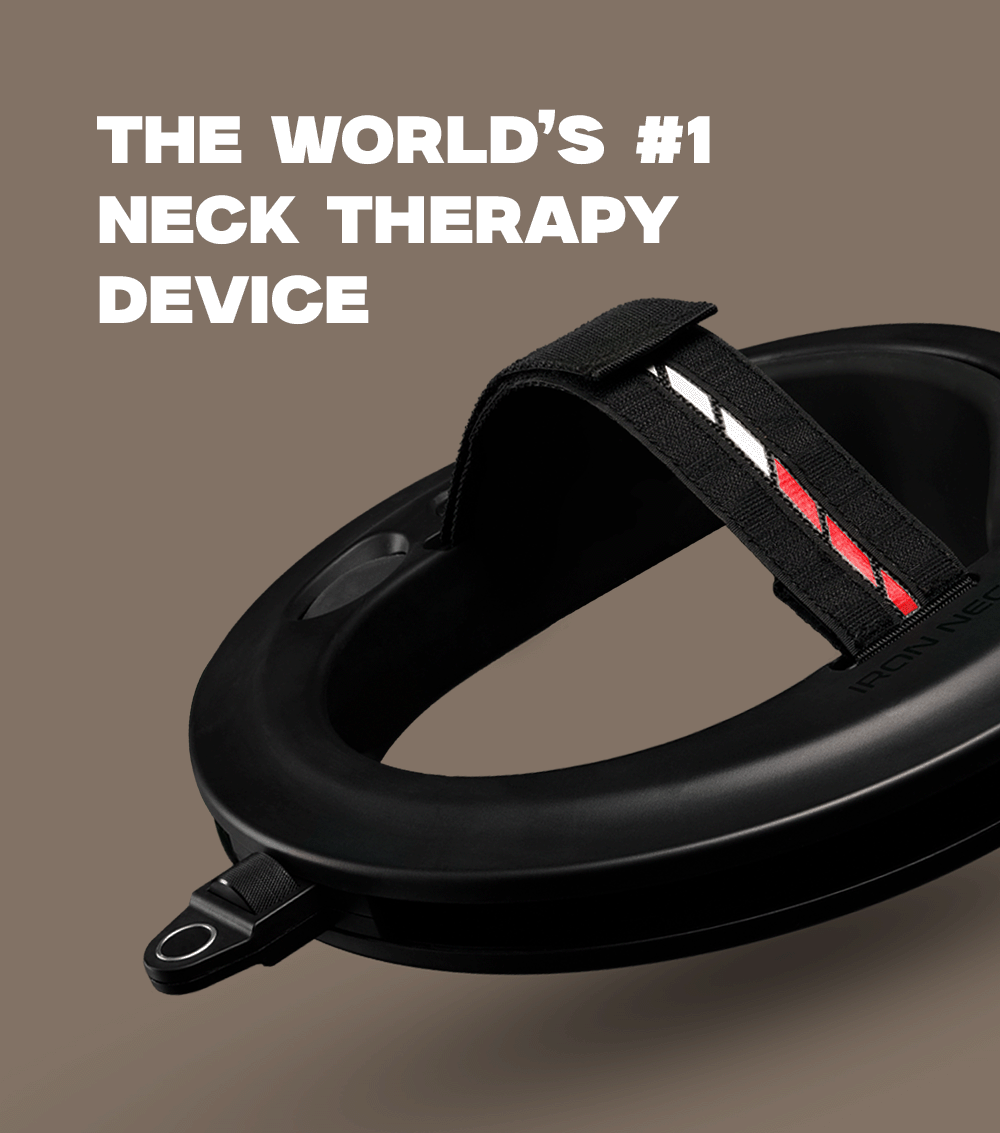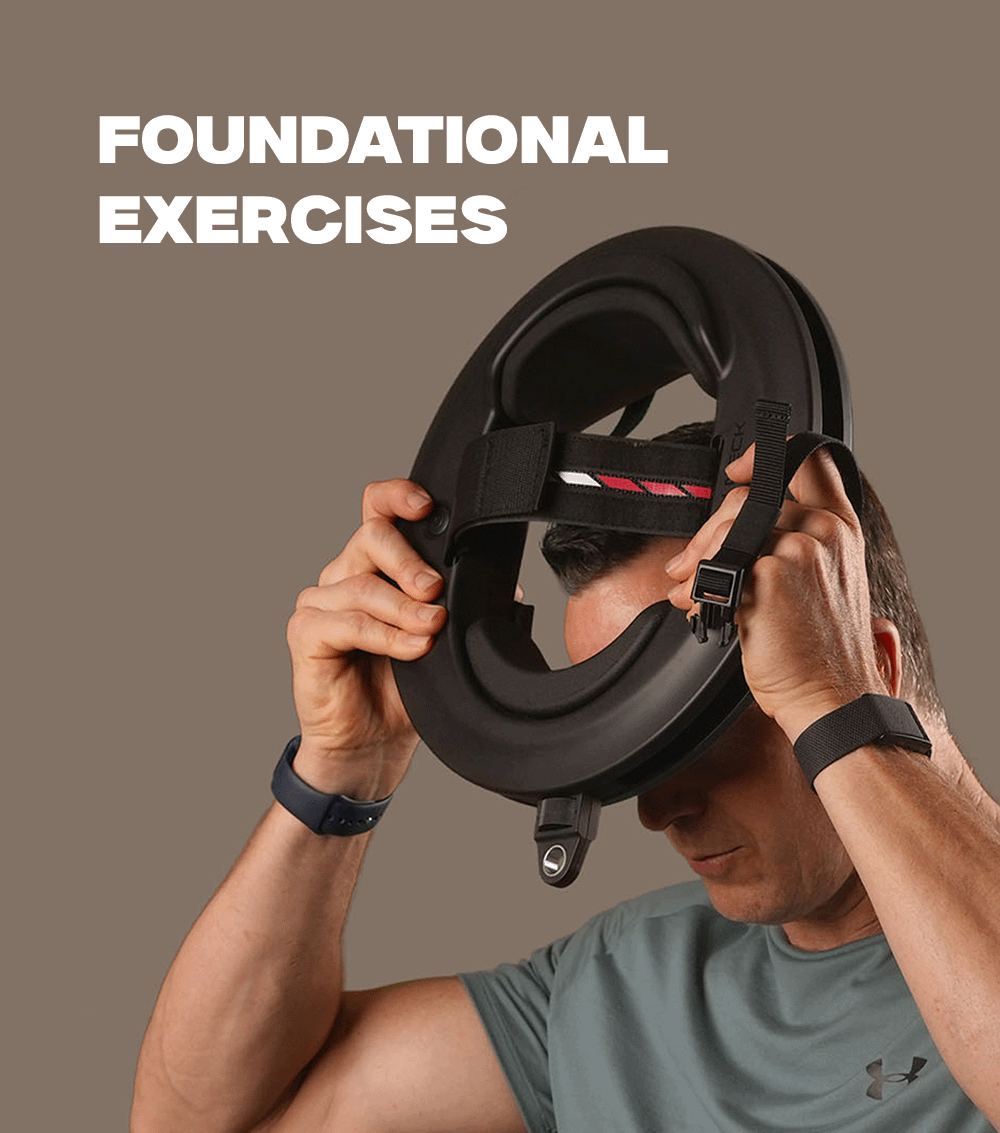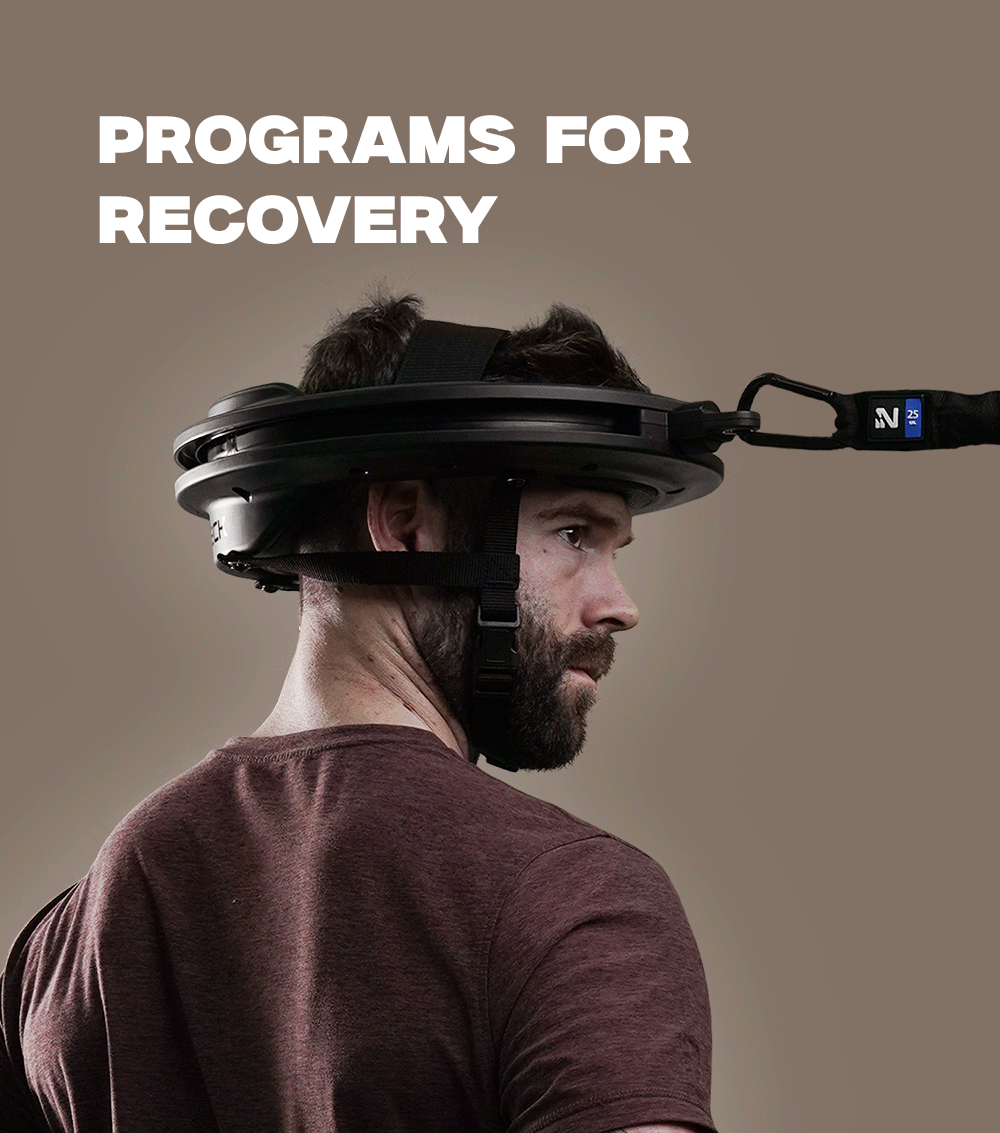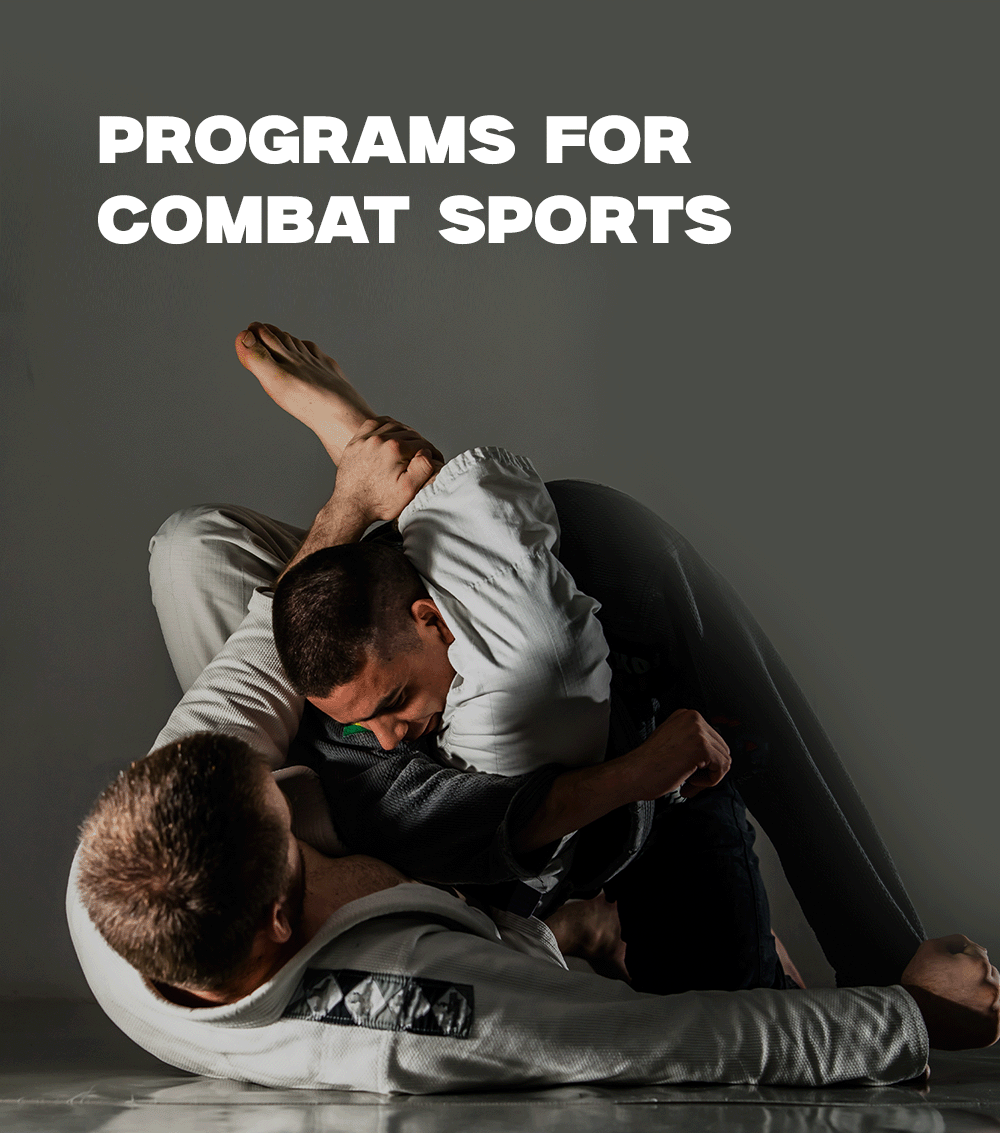Iron Neck Training with NFL Players: Overcoming 'Fad' Perception Through Trust
Coaches can just shake their heads when they flip through Instagram and see all the #fitfluencers doing their made-for-clicks workouts that are more about them looking good than anyone getting actual results. The head shake becomes a face palm when they see their fellow coaches and trainers - the ones who should know better - chasing virality with over-hyped, impress-the-kids workout vids. And the face palm collapses into a #headdesk when they see coaches doing that with high performance athletes, athletes who have no margin for error in how they train and better things to do with their body than star in their trainer's video.
Sexy, "cutting edge" workouts often do more for the viewer and the coach than the athlete. When you see athletes using new gear or going through some convoluted routine, the two questions that should go through your mind are: How did the coach come up with this, and how will it make the athlete or client better in some way?
With the Iron Neck becoming a regular in pro athletes' social media, we asked some of their trainers how they reached the point of saying "Yes, putting an Iron Neck on an NFL player's head is a good idea."
Sizing Up The Iron Neck For NFL Players
Vinny Scollo heard about the Iron Neck on Joe DeFranco's podcast in 2017. At the time, Scollo was incorporating neck training into only some of his athletes' programs. Scollo does a lot of group training, and breaking out towels and neck harnesses - industry standard for neck training in the pre-Iron Neck era - was neither efficient nor effective, especially when he might only see an athlete for one hour a day, two days a week.
Those manual methods gave him no way to standardize training across athletes, let alone quantify and progress it. "If you're having the athletes hold for their partner, you don't know how well they are doing," Scollo says, looking back.
"We really don't have time for extraneous stuff that doesn't lead to positive adaptations for our people," says Ryan Baugus. "When we see something like the Iron Neck come across our desk or our Instagram feed, we look at it from a principle perspective: What's the concept of this? Does this concept or machine really do what it's meant to do? We look at its construct validity for the principles of adaptation that drive our practice."
Baugus, too, faced the familiar limitations of neck training. "Neck rotation is very challenging to load in traditional ways. You can only really do it manually, but that's hard to quantify. It's the same thing with isometrics, positional holds and manual resistance."
Vinny Scollo, Owner of Scollo Strength & Performance
Neck Structure And Function Merged Into An Invention
The protective value his neck may have provided him came to the front of Jolly's mind as retired NFL and former college players started showing signs of early-onset Alzheimer's, neurological deficits, depression to the point of suicide attempts and a cluster of mental health illnesses.
As these events were unfolding in the sports media and then in the general media, Jolly lost a building contract. But "I'm always building and developing," he said, and on his first day off the job he designed the Iron Neck.
Jolly the athlete couldn't help noticing how good it felt to use the neck to pull and twist against resistance bands on a mat while following his wife's Pilates tapes. Jolly the builder recognized that the neck muscles were all diagonals. Every neck movement, then, has some rotational component to it. Rotating the neck against resistance activates and perfuses the neck muscles, which almost immediately opens up the movements and brings us closer to our natural range of motion. "Think about the evolution involved. If you can't see behind you, whatever is sneaking up on you is going to get you!"
Mike Jolly using papier-mache to create the first mold for Iron Neck
Some of the original draft concepts of the moving slider
Like many inventions, the first Iron Neck was modeled on its creator: in this case, Jolly's self-admittedly large head. His wife covered his pate in papier-mache to create the first mold for the Iron Neck. Jolly took the mold and his schematics to a machine shop, who told him to go back and rework the specs to hundredths of an inch. The shop made parts for the space program, so .01" is the widest tolerance they know.
Jolly had his first prototype in five days. The 13-pound aluminum halo was not very comfortable. At $900 to make, it was not really affordable and definitely not profitable. But he had something in hand.
Physiological Plausibility + Real-Life Experience
RB Latavius Murray - Scolo
Coming across the Iron Neck via DeFranco's show prompted a shift. "I was inspired by the simplicity of the unit. Here we have a simplistic way of loading the muscles of the neck, without contact. I love tools where the coach is able to step aside and coach from all angles while letting the athlete do all the movement. That's extremely valuable."
"I also loved that it was loaded by vari-resistance for constant training throughout the range of motion, and that you can attach it to a pulley system."
One of the first athletes Scollo trained with the Iron Neck was running back Latavius Murray. They started with the foundational "F6" movement patterns. "I'm really big on simplicity. Do the basics savagely well. Once you do that, you do everything else much better."
For Scollo's neck training, "everything else" revolves around those foundational movements.
Everyone learns the F6 movements with light resistance, and he then adds those movements as "fillers or correctives" after a set of their main lift of the session. As they progress, he can combine the F6 movements with other exercises: band pull aparts, face pulls or kettlebell lateral raises, for example. "We did a whole delt series with the Iron Neck on Latavius that was awesome."
"If I'm using neck training with a high school football team, you'll probably see me pick 1-3 of the F6 movements and doing them between dead lifts, for example. With an NFL player, it might be full sets on the back end of training and the frequency might be higher."
Scollo also varies the body's position, having the athletes do the F6 movements while kneeling, half kneeling, seated, seated on a physio ball, standing or in a staggered stance. "Whoever it is, whatever position they're in, I'm gauging how they feel and look, and how fluidly do they execute these movements. Only then we can talk about increasing time under tension or load. Movement over everything."
The Iron Neck came to Baugus via Brandin Cooks of the Houston Texans.
"We work from the same progression and the same principles as anything else with the Iron Neck. We want to create activation patterns, following the same principles of tissue responses, overload and nervous system adaptations. If we add an endurance component by increasing time under tension, we're look for a peripheral energy response."
WR Brandin Cooks
That means building up as much general capacity as possible in terms of strength in all planes, and then letting the athletes use that capacity as they "put their own movement signature on it."
Baugus uses the Iron Neck frequently with Cooks. He varies the points of resistance while Cooks and other athletes do side-to-side, bear crawl-type movements, upright side-to-side shuffles, scissor stances and body turns. "It's rare to get resistance from overhead, so we'll pull from overhead or anchor resistance in the front. Then when the athlete does side-bending or rotation from different positions, they are working to resist - that translates to preparing yourself to absorb force."
Ryan Baugus - Doctorate of Physical Therapy
Baugus acknowledges that the forces football players experience on the field are at the limits of tissue capacity, so they cannot approach that level in the gym. They use the Iron Neck for reactivity training very sparingly, but that's where the general capacity work and movement variation comes into play.
"I used to be a sports specific trainer - such a buzzword - and you get in the mindset that if something looks like football, it's relevant to football. But does it really come close to touching the speed and force vectors, let alone the manifold movement variability at a subconscious level? You have to build the capacity and movement patterns that will express themselves as movement quality on the field."
Iron Neck: Advanced Technology to Keep Things Simple
The Iron Neck passed Baugus' principle- and construct-based test because it allowed him to do with neck training the same things he does with developing any other movement pattern. Scollo sees a similar universality to neck training. "If you're smart about your load and you progress well, it's like anything else. If it's not in the right hands and we're talking about somebody who's not coached properly, well..."
Whether they are working with NFL players, recreational athletes or patients trying to find their way back to a healthy, natural posture, Vinny Scollo and Ryan Baugus keep coming back to one word: simplicity.
"It's so challenging for athletes. There's so much out there that LOOKS good and they see other athletes doing all these things," Baugus says. "With the Iron Neck or anything else, use it the most basic of ways but dose it really well."
"When I see people doing the basics really well and I see the physiological basis of what they're doing, you understand why we're borderline snobby about this sort of thing. We don't use 99% of the stuff we come across. But when we can recommend something, we can recommend it 100%."






